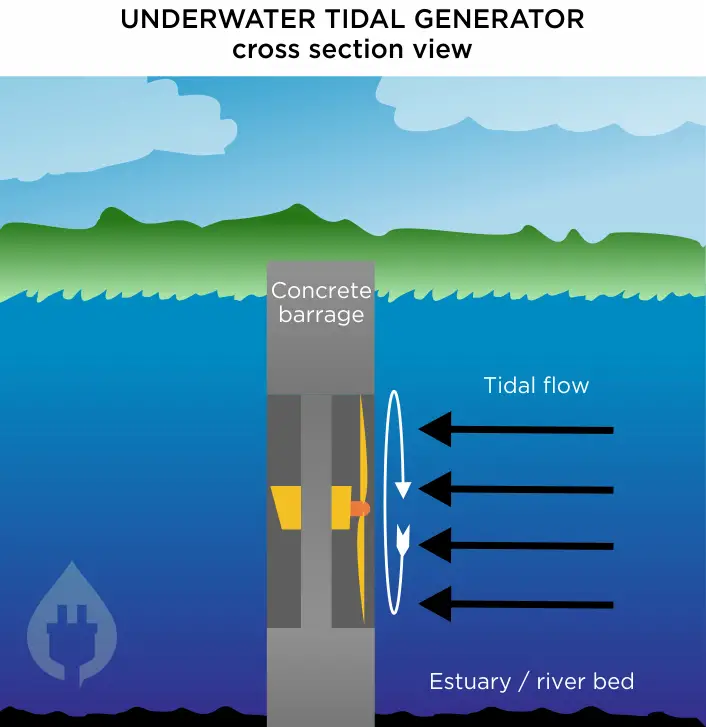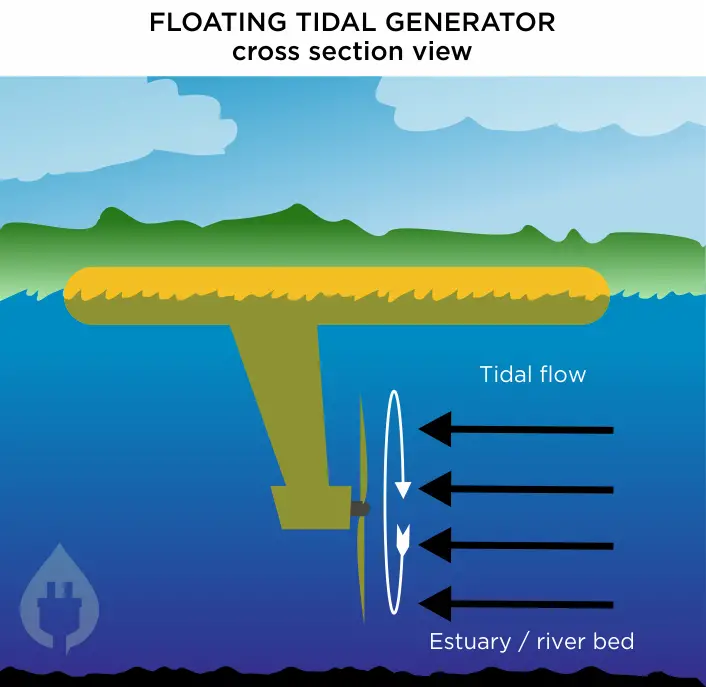The idea of tidal power has been around for a long time, with the Rance Tidal Power Station being the first tidal generator built in France in 19661. The basic principle is that a turbine is placed underwater in a tidal channel, and as the tide comes in and out every day, the flow of the tide causes the turbine to rotate and generate electricity.

Historically, controlling the flow of the tide into the turbines has been a significant engineering problem to solve, with limited tidal estuaries and channel sites available where this can be achieved cost-effectively. This is why there are so few tidal power plants in operation in the world2.
Like the majority of tidal power plants to date, the Rance design is based on building a barrage across the estuary of the river to control the flow of the tides. Underwater holes are left in the barrage into which the turbines are installed, thereby focusing the flow of the tide through the turbines.
The Advantages and Disadvantages of Tidal Energy
There are a number of advantages and disadvantages to underwater tidal generators, for example:
Advantages of Tidal Energy
1. The electricity is renewably generated: The tidal turbine itself is very similar to a standard wind turbine. The main difference being that instead of the wind blowing the turbine to make it rotate, it is the tidal water current flowing past the turbine that makes it rotate. This means that no resources are used up to generate the electricity, every time the tide flows in or out, the turbine turns and generates electricity.
2. Predictable generation: Because the timings of tidal water movements can be predicted to a high degree of accuracy, it is possible to predict exactly how much electricity a tidal turbine is going to generated and at what times. This predictability is much better for the National Grid – knowing when the electricity is going to be generated helps them with their scheduling for ensuring the electricity grid remains balanced at all times.
3. Access: Compared to off-shore wind turbines, which can sometimes be 50 miles or more offshore, tidal generators are always very close to land, and can be accessed much more readily.
Disadvantages of Tidal Energy
1. Limitation of locations: Compared to wind turbines, which can be installed just about anywhere, there are limited geographic locations in which to place tidal turbines. Naturally occurring tidal channels can be used, for example between coastal islands and the mainland, or a concrete tidal barrage must be constructed across tidal estuaries in which to install the turbines.
2. Disruption to sea life: Studies on the impact of underwater turbines to fish and other sea life (e.g. seabirds and seals) have shown that the impact has been low3, this must still be considered in placement of the turbines.
3. Harsh operating environment: tidal estuaries and channels are, by nature, salt water. Salt water is corrosive to metals, so it is very important to mitigate corrosion wherever possible using materials that are resistant .
3. Cost: Building a barrage across an estuary is a large civil engineering undertaking, and very costly. However, this disadvantage has now been mitigated by the development of floating tidal turbines.
Floating tidal turbines are a relative newcomer in the field of renewable energy. These turbines have a submarine-shaped floating section on the surface which is anchored to the sea bed, with two turbines attached on wings similar to and airplane that hang below the surface. The world’s first floating tidal generator is a 2MW turbine called the Orbit O2 and it began generation near the Orkney Islands off the northern coast of Scotland in July 20214.


